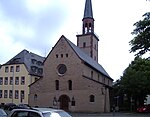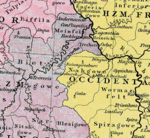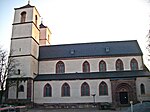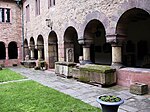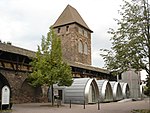Trinity Church, Worms
Churches in Worms, GermanyHeritage sites in Rhineland-PalatinateProtestant churches in Rhineland-Palatinate

The Holy Trinity Church (German: Dreifaltigkeitskirche), full name Reformation Memorial Church of the Holy Trinity (German: Reformations-Gedächtniskirche zur Heiligen Dreifaltigkeit) is the largest Protestant church in Worms. The baroque hall building is centrally located on the market square of the city and is now under conservation.
Excerpt from the Wikipedia article Trinity Church, Worms (License: CC BY-SA 3.0, Authors, Images).Trinity Church, Worms
Marktplatz,
Geographical coordinates (GPS) Address External links Nearby Places Show on map
Geographical coordinates (GPS)
| Latitude | Longitude |
|---|---|
| N 49.63 ° | E 8.3616666666667 ° |
Address
Dreifaltigkeitskirche
Marktplatz
67547 , Worms-Zentrum (Innenstadt)
Rhineland-Palatinate, Germany
Open on Google Maps



